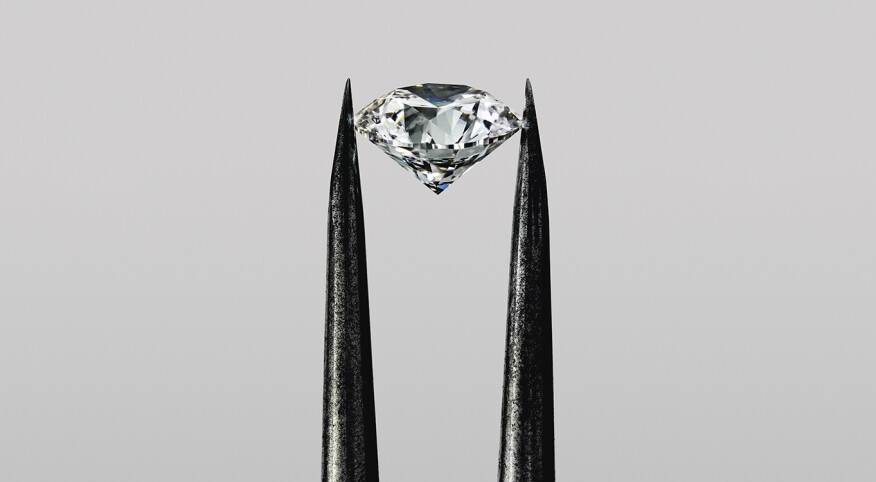Today’s women are increasingly engaged, passionate and proactive about social justice issues, shopping fair trade as well as pursuing environmentally friendly consumer habits. They are asking really good questions and forcing every type of retailer to sit up and listen closely. Of course, the jewelry industry is no exception, something I was reminded of when a girlfriend told me she’s only interested in ethical, green jewelry. It’s a noble line in the sand to draw, but where do you start? The profusion of information that Google spits at you on the subject is mind-boggling. Thankfully, experts have some tips to aid you on your quest for the sparkly piece of jewelry that screams “you” and is crafted in ways respecting people and the earth.
Mean what you say, say what you mean
First, take care not to be swept into buzzwords that will muddy the waters and complicate communication with your jeweler. Before you visit a jeweler, get familiar with some general terms as they apply to the industry.
Jordan Dubin, manager of Dubin's Fine Jewelry in Houston, says, “ ‘Sustainable’ touches on everything relative to Mother Earth, so the challenge is that we in the jewelry industry do everything in our power to respect the planet, have a light environmental footprint and protect the land we’re mining. ‘Ethical’ as it relates to jewelry involves the human aspect of production — fair trade, fair wages and humane conditions.” He suggests using the term “responsible jewelry” to convey both concerns. Even within these distinctions of “sustainable jewelry” and “ethical jewelry,” there’s a lack of consensus, acknowledges Vittoria d’Aste-Surcouf, founder and creative director of Vittoria d’Aste-Surcouf Jewelry Design and Designer’s Diary columnist for National Jeweler. “It means different things to different jewelers.” Dubin recommends the Jewelry Glossary Project for industry definitions of various terms such as “recycled,” “fair trade” and “sustainability.” Being precise when describing what you want will avoid confusion and ensure the jeweler isn’t left to interpret your meaning.
Transparency, trust and connection
Like any business relationship, you’ll want to feel complete confidence in your jeweler. Be savvy in your selection of whom to work with — something made easier by conducting some basic internet research. Dubin, who has worked the past 14 years in his family’s 40-year boutique jewelry business, suggests reading reviews — both good and bad. Scour the business website and note what amount of education they provide on their site addressing responsible jewelry production. When you meet, he adds, read their body language: Are they patient and accommodating of your concerns? Absolutely follow your gut, says d’Aste-Surcouf: “People are smart and have strong instincts.” Listen carefully to how the designer answers your questions. Is sustainable jewelry really, truly something they specialize in? Boutique, independent jewelers are generally likelier than large national chains to cater to the more personalized conversation and experience, d’Aste-Surcouf says. The decision of whom to partner with is the first link in a long chain of trust, so your comfort level is critical.
Get acquainted with your options
The most responsible option may be upcycling grandma’s old jewels buried in your drawer. “If someone comes to me and wants a responsibly designed piece of jewelry, my first question is, ‘Great, what do you have lying around at the bottom of your drawer? Let’s start there, with what you already have,’ ”says d’Aste-Surcouf. She loves repurposing family heirlooms because there’s a story embedded in old jewelry and you’re recreating a piece of family history that can be passed to the next generation.
Dubin says this is a growing trend, to bring in old family jewels and reuse the materials to give it a fresh, modern look. Repurposed jewelry is not only deeply personal, but also a truly a carbon-neutral option. You may not have family gems lying around but are drawn to the idea of using recycled gemstones and metals, often harvested from estate sales. Some jewelers work exclusively with recycled diamonds, a perfect option for the consumer who’d enjoy “giving life to an older diamond,” says d’Aste-Surcouf. Gold classified as “recycled” has been sold back into circulation, melted down, refined, brought back to its pure gold state and ready to make new jewelry pieces, summarizes Dubin, whose business works with vendors committed exclusively to recycled gold. Using existing gold eliminates the need for freshly mined gold — an excellent approach to buying responsibly. Those wanting custom-designed pieces of jewelry — “to avoid possible bad juju!” says d’Aste-Surcouf — should ask about fairmined gold, or gold that has been approved mine-to-market to support artisanal mines typically in developing countries.
Seriously, diamonds are a girl’s best friend
“Diamonds kind of get an unfair rap because of the Blood Diamond movie,” says d’Aste-Surcouf. She recounts how clients worryingly emphasize their desire for conflict-free diamonds; but actually, diamonds — more than colored gemstones —are highly regulated due to the Kimberley Process, a global unilateral effort established in 2003 to prohibit the trade of blood diamonds. Fortunately, the colored gemstone market is making strides to catch up with diamonds to adopt fixed global standards on responsible sourcing. There’s no escaping that the jewelry industry is global, reminds Dubin. “There are parts of jewelry that we use that are mined and sourced from all over the world, and eventually they make their way through production lines to the consumer.” Overall, Dubin says, your jeweler should have pretty straightforward answers about the origins of the gems you’d like in your custom-made piece.
The consumer drives the conversation
Consumers’ demand for responsible jewelry pressures designers to pivot in this direction, says d’Aste-Surcouf, who wrote of her own journey toward responsible jewelry. “The more questions consumers ask, the more it puts it into the industry’s mind that this is important, and so we in the industry need to make changes.” Dubin observes that today's savvy customer increasingly wants to know the story behind their jewelry. “It’s forcing us to continue evolving in this direction.”

Jamie Chung/Trunk Archive









